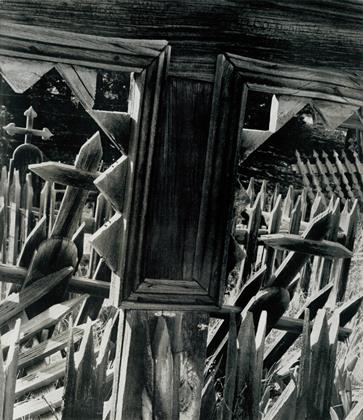who owns the photograph?
EDITORIAL
Sometimes when we seem to split hairs it is found that instead we saw lumber for a balcony with a view. The question concerning the ownership of photographs, once raised for a sturdy look, soon shows that the correct answers deflate egos. Enlightened photographers begin to wonder how small a part they can play and still claim the product. Split the hair of legal ownership of photographs: the photographer makes neither the equipment nor materials, often he neither processes the negatives nor makes the prints. Sometimes other people edit, select and present his pictures—familiar in reportage. When accomplished art director and competent cameraman team up, the former selects, sketches, supervises the image on the groundglass, while the latter gets the by-line. The last exaggerated case points out the polite and empty formality by which photographers in general lay claim to photographs.
When the psychological hair is split, ownership seeems to be a matter of whoever is looking at the picture in question. The person who takes a picture to his heart, to his mind, and to his viscera is the one who psychologically owns it. If he can not establish legal ownership, neither is his mental image transferable. We might extend this idea momentarily with a dogmatic question. Is it apparent that the well-liked photograph is really group owned, at least on the psychological level?
Consider in its turn the phenomenon of selecting pictures for publication or exhibition. The second person (editor) can not help but solve some problems of his own with what is called the first man’s pictures (photographer). Consequently ”creative editorializing” with other men’s photographs is a kind of blind, behind which second man takes possession of first man’s pictures. This may happen in spite of either of them. We can speak here from personal experience in both of the two opposing roles, second person (editor) and first person (photographer). We have designed and hung several theme shows. One purpose of theme shows is to put photographs to work for purposes never dreamed of by their makers. These exhibitions as a totality were ours, most would agree to this; somehow ownership of individual images changed hands in the process, we became possessors—not so agreeable. Theme shows are one kind, we have also selected the "best prints” for one-man shows, or for one-man portfolios in publication. The pious excuse was always ready on our lips that we indeed intended to help the photographer crystallize his own viewpoint. Maybe in a roundabout way we did, but only if, in solving some problem of our own with his pictures, we helped him see himself from a different position.
We also photograph, use a camera for ourselves, and later gnash our teeth when others take possession of our images and edit as they choose.
Having observed the two roles in ourselves we offer this conclusion. So far as the ownership of photographic images is concerned, the gulf between museum personnel and photographer, or between picture editor and photographer, can be bridged; but only by a degree of objectivity that neither side has as yet developed.
A bit of irony presents itself. Any photographer looking at his "own” photographs as if made by another photographer would probably crop them into oblivion—out of jealousy. Nevertheless inner oivnership is still to be earned for every picture. Any photographer has to peel away layer after layer of personal and unique associations from each photograph before he can understand the picture for its own sake; that is, he has to work a hundred times harder than anyone else to establish conscientious ownership of photographs that camera and circumstance drop into his lap.
Subscribers can unlock every article Aperture has ever published Subscribe Now
Editorial
-
 Editorial
EditorialThe Painter’s Eye
Fall 1957 -
 Editorial
EditorialOn The Neglect Of Visual Literacy
Winter 1957 -
 Editorial
EditorialBeyond Art
Summer 1962 By Editor -
 Editorial
EditorialThe Creative Approach
Fall 1953 By M W -
 Editorial
EditorialNew Developments And The Creative Photographer
Spring 1954 By Minor White -
 Editorial
EditorialEditorial
Fall 1958 By Minor White








